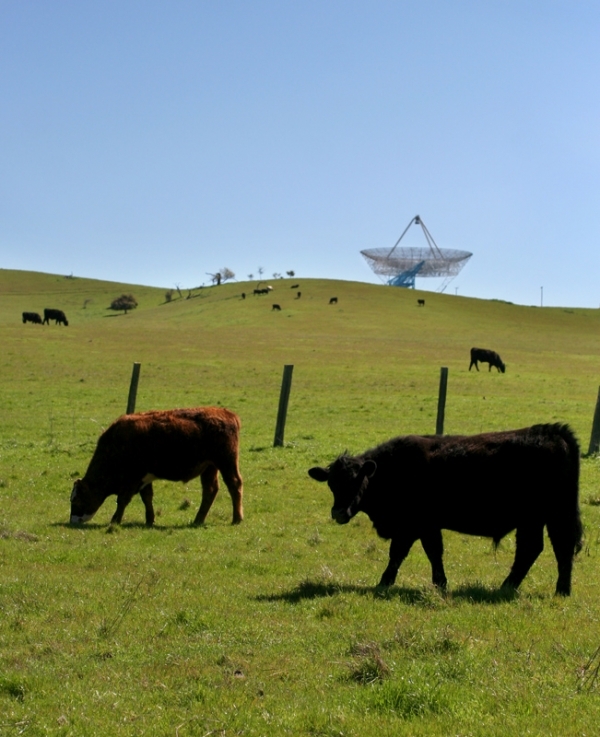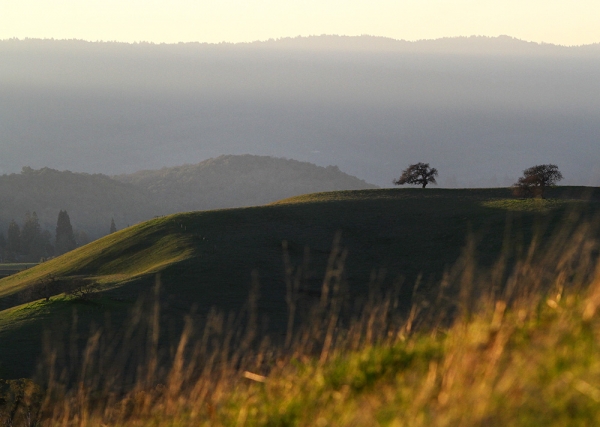With Santa Clara County preparing to demand that Stanford University nearly quadruple its housing production as part of the university's ambitious expansion plan, county planners are also proposing new measures that would curtail Stanford's ability to build anything in the foothills that surround the campus.
The county is now in the midst of reviewing Stanford's application for a new general-use permit, which would allow the university to construct about more than 3.5 million square feet of new development by 2035, including 2.275 million square feet of academic facilities. As part of their review, county planners released last Thursday an amended version of the Stanford University Community Plan, a document that was crafted in 2000 and that creates an "academic growth boundary" (AGB) at the campus.
The Community Plan created a requirement for all new development to fall inside this boundary, which excludes open space areas west of Junipero Serra Boulevard. The existing plan, which the county had since incorporated into its own general plan, specifies that the boundary would remain in place for 25 years. During this period, any proposals to build outside the boundary would require support from four of the county's five supervisors.
"The concept of the growth boundary as it applies to Stanford is a basic one: development must occur within the AGB with lands outside the AGB remaining in open space," the Community Plan states. "The AGB is the primary mechanism for promoting compact urban development and resources conservation in the Community Plan, and it serves as the basis for associated policies throughout the plan that reinforce this basic demarcation line."
The county's proposed amendment would take the dotted line along Junipero Serra, between Sand Hill and Page Mill roads, and effectively solidify it. (View a map of the planned boundary here). As amended, the Community Plan would extend the Stanford academic growth boundary by 99 years. County planners are also proposing numerous edits to underscore the boundary's permanence, striking language that characterizes it as an interim planning tool and inserting wording that effectively establishes it as the status quo for the next century.
The amended Community Plan would, for example, do away with a statement that the boundary is "not meant to be a permanent planning boundary" and that it is intended to stay in place "until a defined level of development intensity has been achieved on lands within the growth boundary." Rather, the new plan would state that the boundary is "intended to provide a planning boundary for academic development on the Stanford campus on a long-term basis if planned development can be accommodated within its boundaries."
In discussing the purpose of the academic growth boundary, the new plan notes that the boundary encourages the "efficient use of Stanford lands"; that it promotes a concentration of people and activities that is needed to support transit and other non-automobile modes of transportation; and that it "preserves open space, protects natural resources and scenic vistas, and avoids geologic hazards in foothill areas outside the AGB." But planners are proposing to delete from the Community Plan a reference to the boundary as a tool to "define the point at which expansion of the portion of the campus designated for academic and related development may be considered" — a tacit acknowledgement that in the county's view, such a point is unlikely to arrive in the next century.
The proposed changes, while significant, are unlikely to change Stanford's near-term expansion plans. The university's application does not propose any development in the foothills. Stanford also credits the academic growth boundary with channeling campus growth "on infill locations within the core campus most suitable for development" and with protecting "natural resources on lands in the foothills."
The Stanford application proposes keeping all existing rules around the boundary in place. But with the significant land-use policy of requiring at least four supporting votes from supervisors to build outside the academic growth boundary set to expire in 2025, county officials are indicating that more stringent measures are now needed to protect the foothills beyond that year.
Supervisor Joe Simitian told the Weekly that the proposed policy, much like the existing one that the county adopted in 2000, intends to add a measure of protection against three supervisors abruptly deciding to "go in a different direction at the behest of the applicant."
In supporting the new requirement, Simitian pointed to a study that the county performed in 2018 to measure Stanford's development potential. Known as the Stanford University Sustainable Development Study Supplement, the document concluded that Stanford can theoretically accommodate up to 44 million square feet of development on its campus over the next 100 years without exceeding the academic growth boundary.
The study also concluded that attaining such a level of growth within the core campus would require Stanford to roughly triple its density. Even so, Stanford's density would become on par with similar institutions. Today, Stanford's academic campus has a floor-area-ratio of 0.34, well below the range of 0.9 to 2.64 at comparable universities, according to the study.
The supplement's findings, Simitian said, helped inform the county's position toward preserving the foothills.
"You can nearly triple the size of the current campus, given the current rate of growth, over the next 100 years and you still would be at a density that is typical for a major university like this," Simitian told the Weekly. "Which then I think led to the conclusion on the part of many, including apparently our planning staff, that if you could — using smart-growth, compact-development strategies — nearly triple the size of the organization over the next 100 years, why would we even be thinking about moving growth up into the foothills?"
Stanford has not issued any formal responses to the county's proposal to extend the academic growth boundary by 99 years (the university's spokesperson Jean McCown told the Weekly on Tuesday that the university is still evaluating the county's newly released documents). But the university's application does not propose any extensions of the boundary and Stanford officials have in the past resisted discussing growth options beyond 2035, citing the difficulty of making predictions about the distant future.
The county's Planning Commission is scheduled to consider the proposed amendments to the Community Plan and the county's proposed conditions of approval for Stanford's expansion over the course of three hearings, the first of which will be held 6 p.m. Thursday at Palo Alto City Hall's Council Chambers.




Comments